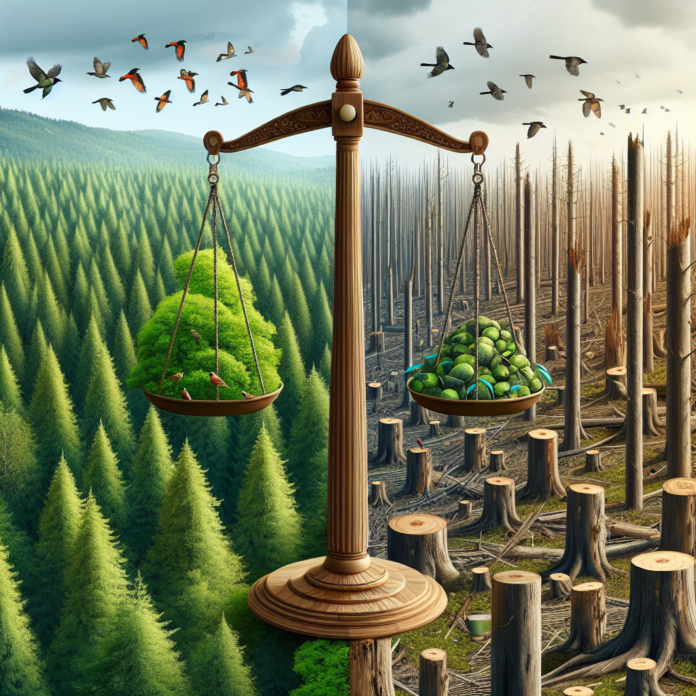Increasing the Value of Standing Trees
Understanding the Economic Value of Standing Trees
Standing trees have traditionally been viewed primarily as timber resources, leading to widespread deforestation. However, recognizing the full spectrum of benefits they provide can make them more valuable alive than cut down. These benefits span ecological, economic, and social domains, creating a compelling case for preserving forested areas.
Ecological Benefits of Standing Trees
Trees play a crucial role in maintaining ecological balance. They are vital for sequestering carbon dioxide, thus mitigating climate change. Furthermore, forests support biodiversity by providing habitats for numerous species, both flora and fauna. They also contribute to water regulation and soil conservation, reducing the risk of erosion and maintaining water quality.
Economic Incentives for Conservation
Beyond their ecological importance, standing trees can generate significant economic value. Governments and organizations are increasingly recognizing the importance of ecosystem services. For example, carbon credits can be traded in markets where companies and countries pay for the right to emit carbon, with standing forests acting as carbon sinks.
Eco-Tourism and Recreation
Forests offer opportunities for eco-tourism, attracting visitors interested in hiking, bird watching, and experiencing nature. This can provide sustainable income for local communities and incentivize the preservation of natural landscapes.
Non-Timber Forest Products (NTFPs)
NTFPs, such as fruits, nuts, resins, medicinal plants, and fibers, can be harvested without harming the trees. These products have local and global markets, offering economic benefits while maintaining the integrity of the forest.
Social and Cultural Significance
Forests hold immense cultural and spiritual value for many indigenous and local communities. They are integral to traditional practices and livelihoods. Preserving these landscapes helps sustain cultural heritage and supports social cohesion.
Strategies for Increasing the Value of Standing Trees
To make trees worth more standing, it’s essential to implement strategies that highlight their multifaceted value.
Policy and Legislation
Governments can enact policies and legislation that incentivize the conservation of forests. This can include tax breaks, subsidies, or grants for sustainable forest management practices.
Community Engagement and Education
Raising awareness about the benefits of standing trees and involving local communities in conservation efforts can lead to more sustainable forest management. Education programs can empower communities to explore alternative livelihoods that do not rely on deforestation.
Research and Innovation
Investing in research to better understand the ecological functions and economic potential of forests can lead to innovative solutions for conservation. This includes developing new markets for ecosystem services and improving sustainable harvesting techniques.
Conclusion
The true value of forests extends far beyond their timber potential. By recognizing and harnessing the ecological, economic, and social benefits of standing trees, we can create a sustainable future that values preservation over destruction. Collaborative efforts among governments, communities, and the private sector are essential to realizing this vision and ensuring forests remain a vital part of our planet’s ecosystem.


